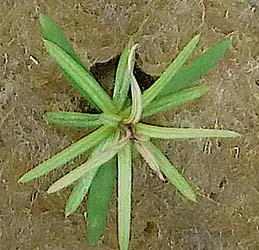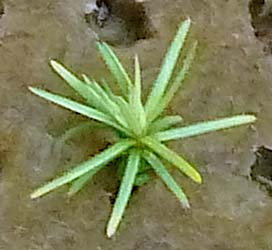Home > Research > Research Results > Research Results 2020 > Identification of genes that are involved with the acclimation of Japanese cedar (Cryptomeria japonica) to heat stress
Update:August 7, 2020
Main content starts here.
Identification of genes that are involved with the acclimation of Japanese cedar (Cryptomeria japonica) to heat stress
| Article title |
Transcriptome analysis of heat stressed seedlings with or without pre-heat treatment in Cryptomeria japonica |
|---|---|
| Author (affiliation) |
Tokuko Ujino-Ihara (a) (a) Department of Forest Genetics, FFPRI, Tsukuba, Ibaraki, Japan. |
| Publication Journal |
Molecular Genetics and Genomics, Springer, May 2020 DOI:10.1007/s00438-020-01689-3( External link ) |
| Content introduction |
It has been predicted that in the future, global warming will increase the frequency of abnormally high temperatures in the summer, which will have various effects on plant life. One adaptation that plants have to abnormally high temperatures is a phenomenon known as "high-temperature acclimation". In "high-temperature acclimation", plants that have previously experienced high temperatures (heat stress) grow resistant to subsequent high temperatures, and the phenomenon is known to occur in angiosperms. Conifers have also shown an ability to acclimate themselves to heat stress, and so work is being done to identify relevant genes of conifers in order to clarify the molecular mechanism of this phenomenon. In the present study, seedlings of Japanese cedar (Cryptomeria japonica) that were grown at 25℃ were subjected to a high-temperature environment of 38℃, after which the temperature was raised to 45℃. All of the seedlings with genes that exhibited "high-temperature acclimation" were collected and compared with seedlings that had been grown at 45℃ without a prior 38℃ treatment. Although no major differences were seen in outward appearance between the two groups (Photo), there were genetic factors that had different responses to the 45℃ treatment. Among these was one type of genetic factor called retrotransposon (Fig.). The activity of retrotransposon in the acclimation of some plants to environmental stress has been shown in recent years, and there is a possibility that it might work in some way to acclimate Japanese cedar to heat stress. The genes that have been identified in the present study will be further examined in detail in order to reveal the acclimation mechanism of conifers to heat stress.
Photo: Seedlings that were subjected to high-temperature treatment at 45℃. Left: No prior treatment at 38℃. Right: Prior treatment at 38℃.
Figure: Reactions of high-temperature response genes of Japanese cedar to 45℃ high-temperature treatment. |
Copyright © Forest Research and Management Organization. All rights reserved.



